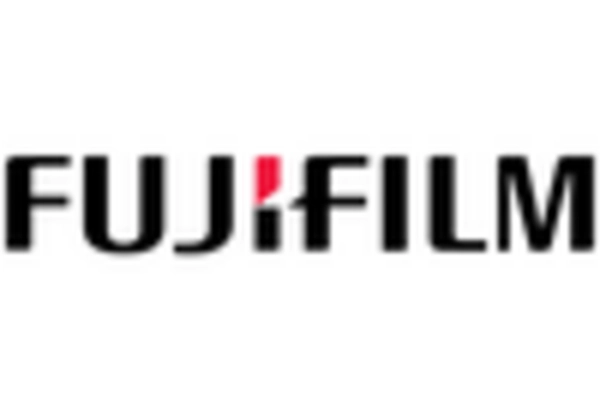Rising Pet Ownership
The veterinary ct-scanner market is experiencing growth due to the increasing number of pet owners in the UK. As pet ownership rises, the demand for advanced veterinary care escalates, leading to a greater need for diagnostic imaging technologies. Recent statistics indicate that approximately 50% of households in the UK own a pet, which translates to a significant market for veterinary services. This trend suggests that veterinary practices are more likely to invest in sophisticated equipment, such as CT scanners, to provide comprehensive care. The growing awareness among pet owners regarding the importance of early diagnosis and treatment further fuels this demand. Consequently, The veterinary ct-scanner market is poised for expansion. Veterinary clinics strive to meet the expectations of pet owners seeking high-quality medical services..
Increased Awareness of Animal Health
The market is positively influenced by the growing awareness of animal health among pet owners.. As the public becomes more informed about the importance of regular veterinary check-ups and advanced diagnostic options, the demand for sophisticated imaging technologies rises. Educational campaigns and outreach programs by veterinary associations in the UK have contributed to this heightened awareness. Pet owners are now more inclined to seek out veterinary practices that offer cutting-edge diagnostic services, including CT scans. This shift in consumer behavior indicates a potential increase in the market size for veterinary ct-scanners, as practices strive to meet the expectations of informed pet owners who prioritize their animals' health.
Competitive Landscape and Market Innovation
The veterinary ct-scanner market is characterized by a competitive landscape that fosters innovation and advancements in imaging technology. As various manufacturers strive to differentiate their products, there is a continuous push for improved features, such as faster scanning times and enhanced image quality. This competitive environment encourages veterinary practices to adopt the latest technologies to remain at the forefront of animal healthcare. In the UK, the presence of multiple suppliers and manufacturers in the veterinary imaging sector suggests a dynamic market where practices can choose from a range of options. This competition not only drives down costs but also enhances the overall quality of diagnostic imaging available, thereby benefiting the veterinary ct-scanner market.
Regulatory Support for Veterinary Practices
The veterinary ct-scanner market benefits from supportive regulatory frameworks that encourage the adoption of advanced diagnostic technologies. In the UK, regulatory bodies are increasingly recognizing the importance of modern imaging techniques in improving animal health outcomes. This regulatory support may manifest in the form of grants or funding opportunities for veterinary practices looking to upgrade their equipment. Furthermore, compliance with stringent health and safety standards necessitates the use of advanced imaging technologies, thereby driving the demand for veterinary ct-scanners. As veterinary practices align with these regulations, the market is likely to see a surge in the adoption of CT scanners, enhancing diagnostic capabilities and overall veterinary care.
Technological Integration in Veterinary Practices
The integration of advanced technologies within veterinary practices is a key driver for the veterinary ct-scanner market. As veterinary clinics increasingly adopt digital solutions, the demand for high-resolution imaging systems rises. The ability to integrate CT scanners with other diagnostic tools, such as MRI and ultrasound, enhances the overall diagnostic process, making it more efficient and accurate. This trend is particularly relevant in the UK, where veterinary practices are investing in comprehensive diagnostic suites. The veterinary ct-scanner market is likely to benefit from this trend, as clinics seek to provide holistic care that meets the evolving needs of pet owners. The potential for improved patient outcomes through accurate diagnostics further underscores the importance of this driver.

















Leave a Comment